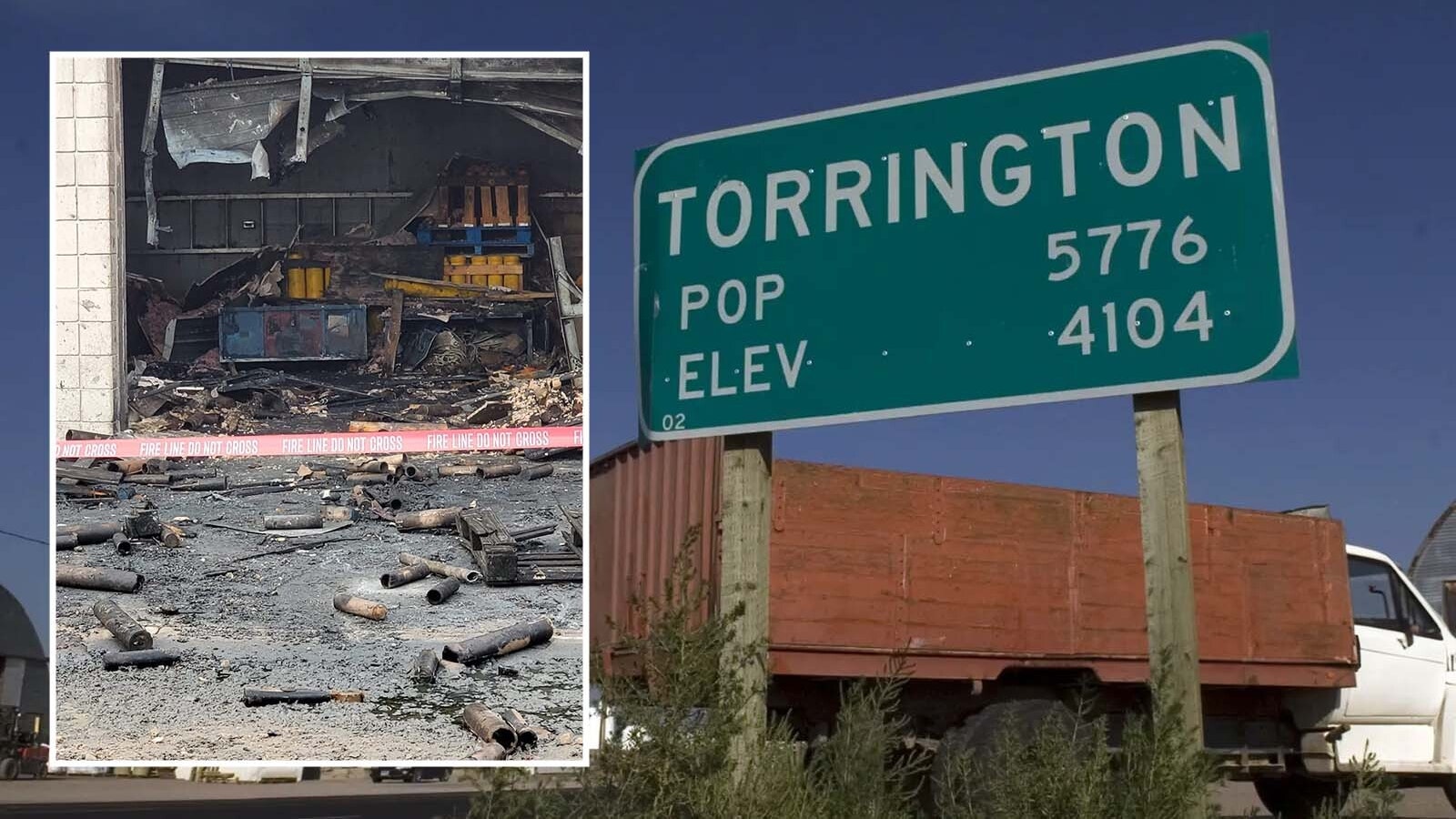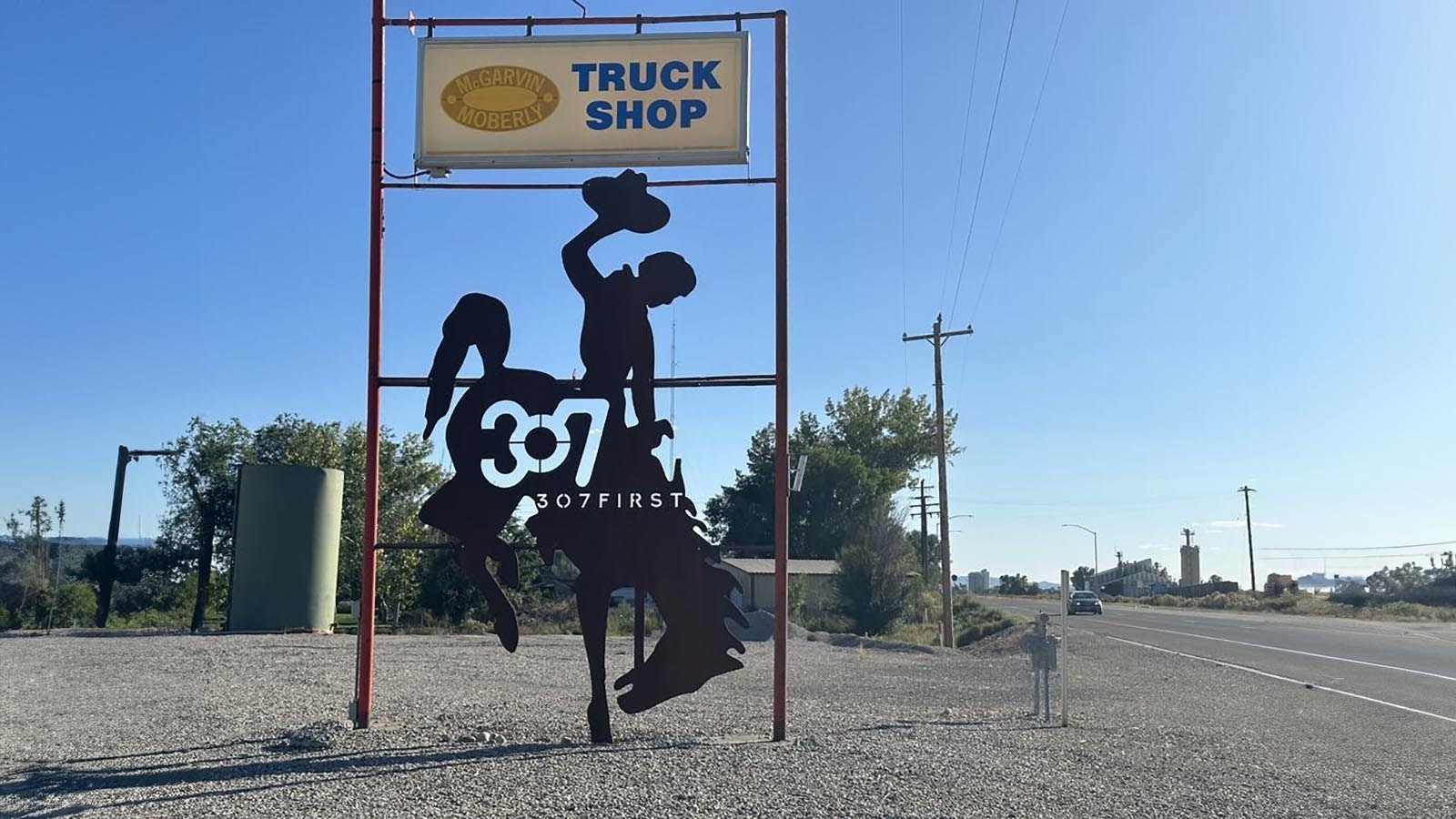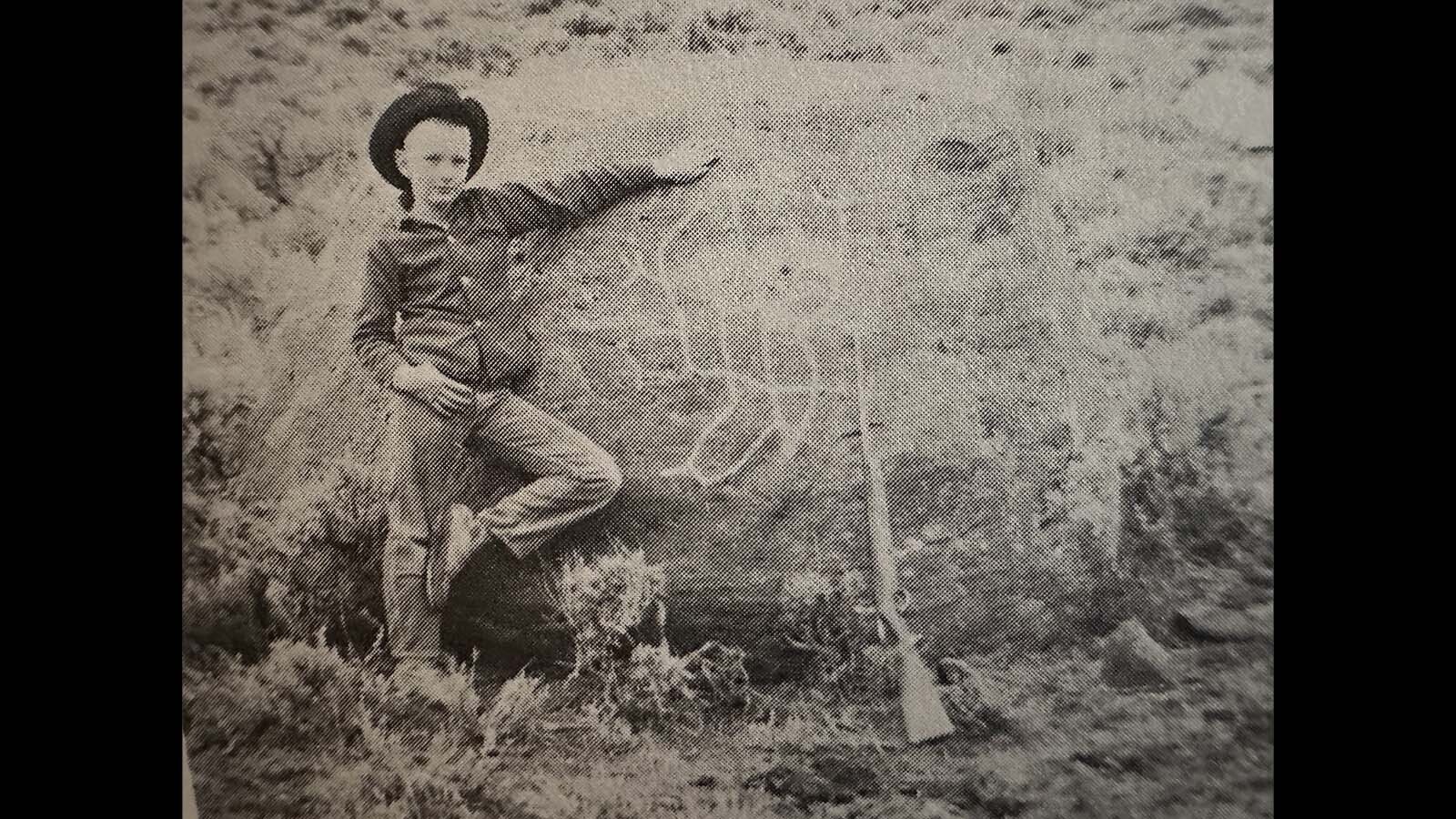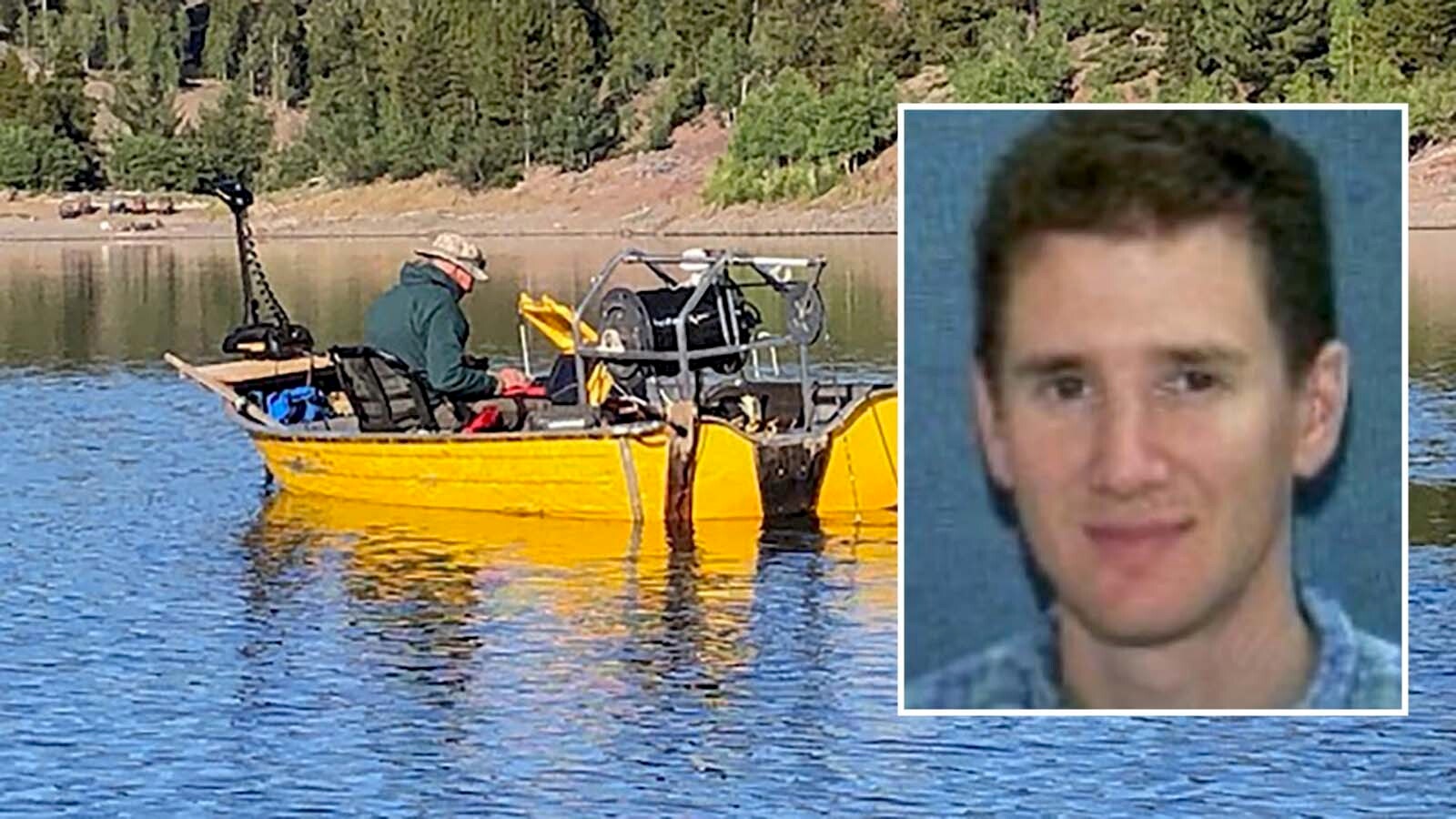By Wendy Corr, Cowboy State Daily
Since 1936, the Crandall Ranger Station, located an hour northwest of Cody, has been home to forest rangers and their families year round.
But the years have taken their toll on the buildings – so the Forest Service has partnered with HistoriCorp volunteers to restore the buildings for future generations.
For the last six weeks, volunteers with the nonprofit organization HistoriCorps have been sanding, pouring cement, crafting replacement logs, and painting the interiors and exteriors of historic cabins at the Crandall Ranger Station, located between Cody and Cooke City, Montana on the Shoshone National Forest.
“This building has needed some repairs for quite a while now,” said Kristie Thompson, Public Affairs Officer for the Shoshone National Forest. “And through the Great American Outdoors Act, we’ve been able to find that funding, finally.”
Funding the Restoration
Thompson said funding for the restoration was made available through the Great American Outdoors Act, which was passed in February of 2021.
“Thanks to Great American Outdoors Act, the Forest received funding for the ‘First Forest Initiative’ to begin work to improve historic Ranger stations,” Thompson said. She explained that for the first two years of the initiative, work will be done at the Crandall Ranger Station, which is projected to cost $300,000.
“And then one year so far has been funded at our Sunlight Ranger Station,” she added.
But that money goes much farther thanks to the efforts of HistoriCorps, a nonprofit organization based in Morrison, Colorado, with a mission to engage volunteers to save historic places.
“We have a strong relationship with the Shoshone National Forest,” said project supervisor Reid Saunders. “And so there’s a lot of projects and a lot of opportunities out here. It’s a really historically important forest, which is really exciting for us.”
Volunteers, like Linda Saunders from Virginia and Lydia Jakovac from British Columbia, learn about historic restoration and preservation on the job. On this day, Saunders and Jakovac are carving pieces of wood to replace log ends that have rotted away – skills, they say, that they learn on the job.
“The little points that come out (from under the roof) are called purlins,” said Saunders, whose daughter is the project manager.
Jakovac found out about the opportunity by going on HistoriCorps’ website, where projects are listed and volunteers can sign up.
“I am a grade three teacher in British Columbia,” said Jakovac. “So I have July and August vacations, and this is the best way to see America, and to help with historic preservation.”


Attention to Detail
Thompson pointed out that HistoriCorps volunteers do their best to match the style of the original building.
“We are matching everything the best we can to a time period,” she said. “So this was built in 1936 – colors have changed, the way that we build things has changed, but we’re trying to do as much to that historic nature as possible.”
Thompson pointed to the frames around the main cabin’s doors and windows.
“Some of these pieces of wood are from 1936, when this building was built,” she said. “However, you can’t really tell the difference between that and the newer parts. Our volunteers through HistoriCorps have repainted everything and sanded it down to look all the same.”
Thompson said HistoriCorps volunteers are paying close attention to detail. For example, the Sherwin Williams paint store in Cody had to create a new shade to match the cupboards in the cabin’s kitchen.
“The name of the color for that, at the Sherwin Williams down in Cody, is now called Crandall Kitchen,” said Thompson.
Historic Significance
The Shoshone National Forest encompasses 2.4 million acres of rugged mountain beauty – more than 1.4 million acres of which is congressionally designated wilderness.
For Thompson, the ruggedness of the backcountry landscape is what makes this forest unique, and emphasizes the determination of those who chose to live and work at the Crandall Ranger Station when it was built 86 years ago.
“If you think back to even 30 years ago, what the Chief Joseph highway was like, and being able to get all of the supplies up over that pass, to be able to build these buildings in 1936 – the amount of work must have just been phenomenal,” said Thompson.
She pointed out that the two ranger stations in this part of the forest – the Crandall and Sunlight stations – had rangers and their families inhabiting them year round.
“They were vital to our preservation and conservation of the Shoshone National Forest,” said Thompson.
Preserving National Heritage
Archaeologist Kyle Wright was the individual responsible for contacting HistoriCorps to begin work on these structures. He explained that by restoring these historic buildings, a piece of our national heritage is being preserved.
“I think, the Shoshone National Forest, being the first national forest in the nation, it’s kind of a special place,” said Wright. “We have a long history, our historic structures are a reflection of our growth and our progress through the years.”
He said the work has been prioritized based on Section 106 of the National Historic Preservation Act.
“That’s the charter for preserving and making sure we don’t destroy our cultural resources,” said Wright.
Victoria Ibarra, an engineer with the Shoshone National Forest, said these buildings will continue to be used.
“This is where our employees are staying throughout the summer, who come and help us, so we want to make sure these buildings stay upkept,” she said.
Work Will Continue
Work on the Crandall Ranger Station is wrapping up for this year, but Saunders said HistoriCorps volunteers will return next year.
“This is our last week here at the end of August,” she said. “And then we have another session next summer.”
“(It’s been a) great partnership with HistoriCorps and the phenomenal work that Reid and Rachel, the two program managers, are doing here,” said Thompson. “They’ll be coming back to us next summer, and probably following on for future work here on the Shoshone as well, as part of HistoriCorps.”
For Saunders, working in the Shoshone National Forest has been fulfilling.
“It’s a place where people have wanted to be for a very long time,” she said, “and to kind of see the way people have migrated through this area, and the different relationships they’ve had with it – all these buildings are giving us touchstones to our past.”






